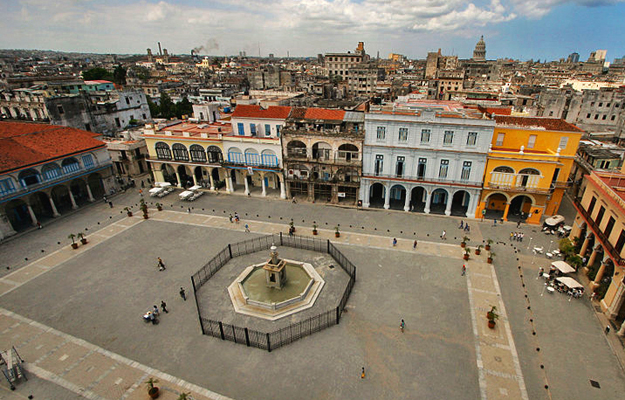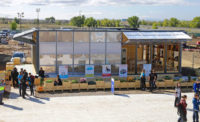 |
| Photo courtesy Brian Snelson/Wikipedia |
In February, architects from around the globe will meet in Havana to discuss a master plan that aims to preserve the city’s rich cultural heritage. |
For decades, Havana has charmed foreigners who visited the Caribbean city well-known for its sultry music, world-class cigars, and cacharros, the vintage American automobiles imported to the country prior to the 1959 revolution. The urban landscape is like few others: Located on Cuba’s northern coast, this city of 2.1 million people is endowed with a range of architectural styles, from Renaissance, Moorish, and Baroque to Neoclassical and Mid-Century modern. In 1982, UNESCO named Old Havana a World Heritage Site.
“Havana was not ruined by overdevelopment or the urban renewal programs of the 1960s,” says Julio César Pérez, a 54-year-old practicing architect in Havana who travels internationally to speak about Cuba. “We are proud of our city, our culture, our architectural heritage. We love our country, and we want the best for it.”
This devotion is what led Pérez to start developing a master plan for Havana a decade ago while a Loeb Fellow at Harvard’s Graduate School of Design. Fearing a future building frenzy that could erode the city’s soul, Pérez conceived a multifaceted scheme that calls for historic preservation combined with sensitive new development. His plan emphasizes the retention of Havana’s polycentric layout, derived from a pedestrian system of interconnected squares. Water-front redevelopment would take its cue from local traditions and European cities, with low-rise buildings containing housing and ground-level cafés, galleries, and shops; meanwhile, the port zone would be transformed into a modern commercial and sports center. His plan also includes a new public transportation system, infrastructure upgrades, and an increase in public space. “It’s aimed at preserving our heritage while also creating new urban and economic opportunities,” says Pérez.
In 2006, Pérez completed his plan and registered it with the U.S. Copyright Office. The following year, with the help of colleagues and two organizations—the Council for European Urbanism and the International Network for Traditional Building, Architecture & Urbanism—he began hosting annual design charrettes in Havana, inviting architects and planners from around the globe, from Australia to Norway, to visit his beloved city and help him evolve the plan. Local architects also participate. “We don’t exclude anyone, even if they disagree with our ideas,” Pérez says. This year’s event takes place February 19–25.
John Pilling, a Boston architect and professor who has attended the charrettes since their inception, says he first visited Havana in 2001 and was immediately hooked. “It’s one of the most memorable cities in the world,” he explains, noting that beyond its historical buildings, Havana boasts remarkable works of modern architecture. Given recent changes in government policies, he says, “I have an abiding fear that, all of a sudden, Havana will get overwhelmed by oppressive high-rises.”
Indeed, the city seems poised for new construction. Since Raúl Castro (Fidel’s 80-year-old brother) became Cuba’s president in 2008, he has cautiously initiated economic reforms and private enterprise. Recently, Cuban citizens have gained the right to buy and sell houses and own certain types of businesses. There are talks of loosening travel restrictions for Cubans, too. Some foresee the country eventually following in the footsteps of nations like China, with its state-sponsored capitalism.
Havana’s harbor would be particularly attractive to foreign investors, says Jeffrey Heller, principal at San Francisco–based Heller Manus Architects. He has traveled to Cuba on four occasions and, in 2010, attended one of Pérez’s charrettes. “Everyone knows the day will come when the doors will open, and it’s going to be a land rush,” Heller says. His perception is partly based on his experience working in other communist nations. In China, for instance, he currently has 11 projects totaling 71 million square feet. A development boom in Cuba is imminent, he says: “The question is when and how fast, and how do you protect Havana in the process.”
Only time will determine if the ideas of Pérez and others to protect Havana’s unique character will hold under inevitable development pressures. Pérez is sanguine about the prospects. “I’ve done what I considered was my duty,” he says of his master plan. “It is a work of love for my city.”
Laura Raskin contributed additional reporting to this story.
This story appears in the February 2012 issue of Architectural Record.



Post a comment to this article
Report Abusive Comment